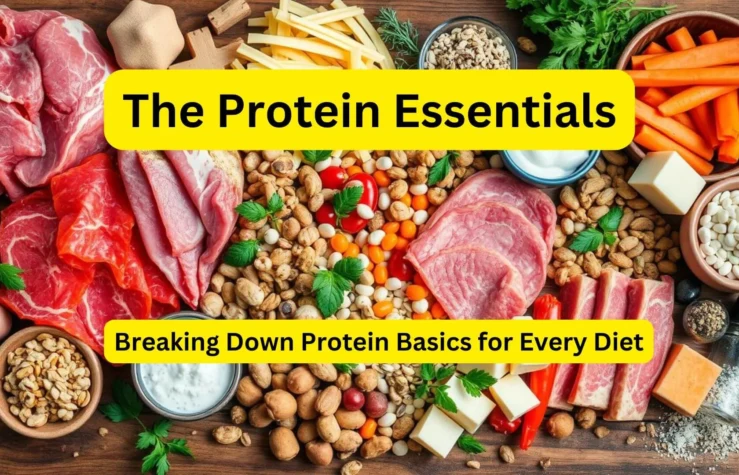Protein is key to our health and well-being. But do you know how much you need and what types are best? The answers might surprise you. This guide explores protein’s role, how much we should eat, and the best foods for our bodies. It’s for athletes, health enthusiasts, and anyone wanting a balanced diet. Are you getting the most from protein in your life? Learning about this macronutrient could unlock your full potential. Join us as we uncover the protein essentials and how they can improve your health and fitness.
Key Takeaways
- Protein is an essential macronutrient, vital for supporting overall health and sustaining the body’s key functions.
- Understanding the essential functions of protein and how to optimize its intake is key to achieving your health and fitness goals.
- This comprehensive guide will cover the basics of protein, from its structure and function to the best sources and strategies for optimal intake.
- Discover the truth behind common protein myths and misconceptions to ensure you’re getting the most out of this vital nutrient.
- Explore the impact of protein on weight management, muscle building, and recovery, as well as its importance for different dietary needs and lifestyles.
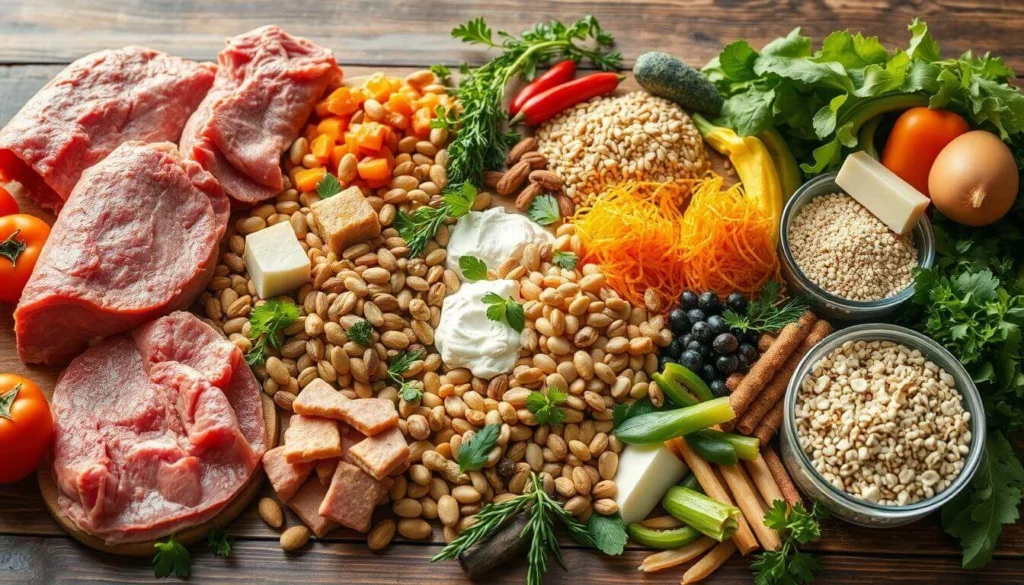
Understanding Protein Essentials: A Comprehensive Guide
Proteins are the building blocks of life, crucial for our bodies’ structure and function. They are made of amino acids, which form our muscles, organs, and hormones. Knowing about amino acids, nutrition, and health benefits of protein is key for our well-being.
The Building Blocks of Life
Proteins are chains of amino acids, vital for many bodily functions. These acids help build and repair tissues, support our immune system, and make essential compounds. Getting enough protein is vital for our growth, health, and repair.
Why Your Body Needs Protein Daily
Our bodies need a steady flow of amino acids to work right. Protein creates new cells and aids in cell maintenance and repair. It’s also key for energy, muscle growth, and a strong immune system.
Basic Protein Structure and Function
Proteins are complex molecules of amino acids folded into shapes. These shapes let proteins do many important jobs, like starting chemical reactions and supporting cell structures. Knowing how proteins work is important for our health.
“Protein is not just for bodybuilders – it’s a vital nutrient for people of all ages and activity levels.”
The Science Behind Amino Acids and Protein Synthesis
Protein synthesis is key in our bodies, and amino acids are vital. They are the building blocks of proteins. The sequence and structure of amino acids decide what the protein can do.
Amino acids come in two primary categories: essential, which must be obtained through diet, and non-essential, which the body can produce on its own. We must get them from food. Non-essential amino acids can be made by our bodies from other compounds. Both are important for making new proteins, which help build muscles and repair tissues.
Essential Amino Acids | Non-Essential Amino Acids |
Histidine, Isoleucine, Leucine, Lysine, Methionine, Phenylalanine, Threonine, Tryptophan, Valine | Alanine, Arginine, Asparagine, Aspartic Acid, Cysteine, Glutamic Acid, Glutamine, Glycine, Proline, Serine, Tyrosine |
Protein synthesis starts with DNA’s genetic information being translated into mRNA. This mRNA guides the assembly of amino acids into proteins. The sequence of amino acids, based on the genetic code, determines the protein’s structure and function.
Knowing how amino acids work in protein synthesis is key for muscle building and good nutrition. Getting the right mix of essential and non-essential amino acids helps our bodies make the proteins needed for growth and repair.
“Amino acids are the fundamental building blocks of life, and their precise arrangement determines the structure and function of the proteins they form.”
Daily Protein Requirements Across Different Life Stages
Eating a diet full of protein essentials is key for good health. But, how much protein you need changes with age and how active you are. Let’s explore the nutrition and health benefits of protein for each life stage.
Protein Needs for Adults
Healthy adults should aim for 0.8 to 1.2 grams of protein per kilogram of body weight. This means about 56-91 grams of protein daily for the average adult. But, your age, gender, and how active you are can affect how much you need.
Children and Adolescent Requirements
Kids and teens need more protein essentials than adults. Children aged 4-13 should get 0.85-1.05 grams per kilogram of body weight. Teens aged 14-18 need 0.85-0.95 grams per kilogram.
Special Needs for Athletes and Active Individuals
People who are very active, like athletes, need more protein. They need 1.2 to 2.0 grams per kilogram of body weight. This helps their muscles grow, repair, and recover.
Remember, these are just general guidelines. Your specific needs might be different. Talking to a healthcare professional or registered dietitian can help figure out the right amount of protein essentials for you.
Complete vs. Incomplete Proteins: What’s the Difference?
Proteins come in different types, and knowing the difference is key. This is especially true for those eating plant-based, as it helps ensure they get all the amino acids they need. A balanced amino acid profile is essential for good nutrition.
Complete proteins, or high-quality proteins, have all the amino acids our bodies need. These amino acids are vital and can’t be made by our bodies. Meat, eggs, and dairy products are examples of complete proteins derived from animals.
Plant-based proteins, found in grains, legumes, and nuts, are usually incomplete. One or more important amino acids are absent from them. But, you can mix different plant-based proteins to get all the amino acids your body needs.
- Examples of complete protein sources: Meat, poultry, fish, eggs, dairy products
- Examples of incomplete protein sources: Grains, legumes, nuts, seeds, vegetables
To get a balanced plant-based nutrition plan, mix different protein-rich foods. Try pairing beans with rice or making a nut butter sandwich on whole-grain bread. This way, you can get all the amino acids your body needs for health and function.
“The quality of protein you consume is just as important as the quantity. Understanding the differences between complete and incomplete proteins can help you make informed choices to support your overall health and fitness goals.”
Top Sources of High-Quality Animal Proteins
Animal-based sources are known for their high nutritional value. They include lean meats, seafood, and dairy. These foods are packed with health benefits that support a balanced diet. Let’s look at the best animal-based protein sources and their nutritional profiles.
Lean Meats and Poultry Options
Lean cuts of red meat, like sirloin, round, and flank, are great for protein essentials. They are not only high in protein but also rich in iron, zinc, and vitamin B12. Chicken, turkey, and other poultry are also good choices. They offer a leaner option compared to red meat.
Fish and Seafood Varieties
The ocean is full of protein essentials. Omega-3 fatty acids and protein are abundant in fatty fish, such as mackerel, salmon, and tuna. These are beneficial to brain and heart health. Other seafood options like shrimp, scallops, and tilapia also provide protein and nutrition.
Dairy Products and Eggs
Dairy foods, including milk, cheese, and yogurt, are good for protein essentials. They also have calcium and vitamins. Eggs are another great protein choice. They have all the amino acids needed for growth and repair.
Protein Source | Protein Content (per serving) | Additional Nutritional Benefits |
Lean Beef (3 oz) | 22g | Iron, Zinc, Vitamin B12 |
Chicken Breast (3 oz) | 27g | Niacin, Vitamin B6, Phosphorus |
Salmon (3 oz) | 19g | Omega-3 Fatty Acids, Vitamin D |
Greek Yogurt (6 oz) | 17g | Calcium, Probiotic |
Eggs (2 large) | 12g | Choline, Vitamin D, Selenium |
Adding a variety of these protein essentials to your diet ensures you get high-quality nutrition. This helps your body get the building blocks for optimal health benefits.
Plant-Based Protein Sources for Vegetarians and Vegans
If you’re a vegetarian or vegan, getting enough protein from plants is key. Luckily, there are many plant-based proteins that are both nutritious and tasty. Let’s look at some great vegan protein choices for your diet.
Legumes like beans, lentils, and peas are full of plant-based proteins. They’re also rich in fiber, complex carbs, and vitamins and minerals. Pair them with whole grains like quinoa or brown rice for a full protein meal.
Nuts and seeds are also great for vegan proteins. Almonds, walnuts, chia seeds, and hemp seeds are loaded with protein and healthy fats. Add them to salads or enjoy them as a snack to increase your plant-based protein intake.
Soy products like tofu, tempeh, and edamame are known for their plant-based proteins. They have all the amino acids you need, making them a complete protein for vegetarians and vegans. Use these versatile foods to add protein to your meals.
Lastly, plant-based protein powders like pea, hemp, or brown rice are easy to use. Mix them into smoothies or baked goods for a quick protein boost.
By mixing different plant-based protein sources into your diet, you can meet your daily nutrition needs. This supports your health and well-being.
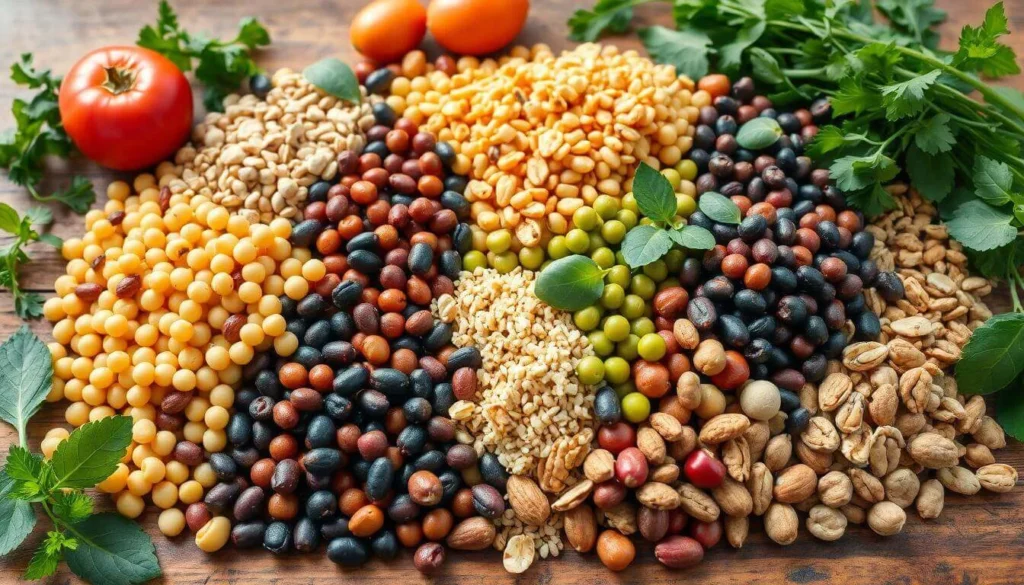
Protein’s Function in Muscle Growth and Repair
Protein is key for building and repairing muscles. It gives the necessary parts for fixing and growing muscle after hard muscle building workouts. Adding the right amount of quality protein, like whey protein, to your diet helps a lot with workout recovery and muscle growth over time.
Protein Timing for Optimal Results
When you eat protein matters a lot for muscle building. It’s best to have protein-rich foods or supplements within 30 minutes to an hour after working out. This is when your muscles are ready to take in and use amino acids from protein to fix and grow muscle fibers.
Post-Workout Protein Strategies
- Choose fast-absorbing whey protein shakes or smoothies for a quick boost after working out.
- Pair whey protein with carbs to fill up glycogen stores and help with muscle recovery.
- Include lean meats, eggs, or dairy in your post-workout meal for a steady flow of amino acids.
Protein Source | Absorption Rate | Ideal Timing |
Whey Protein | Fast | Immediately post-workout |
Lean Meats | Moderate | Within 1-2 hours post-workout |
Eggs and Dairy | Slow | As part of a post-workout meal |
“Proper protein intake, combined with a comprehensive workout routine, is the foundation for building and maintaining lean muscle mass.”
Protein Supplements: Types, Benefits, and Considerations
Protein supplements are popular among those who care about their health and fitness. They help build muscle, aid in recovery, and meet daily protein needs. The key is understanding the various types and their advantages.
Whey protein comes from cheese production and is known for quick absorption. It’s great for post-workout recovery. For those on plant-based diets, vegan proteins like soy, pea, or hemp are good alternatives.
- Whey protein: Rapid absorption, supports muscle growth and recovery
- Casein protein: Slow-digesting, helps sustain muscle growth over time
- Soy protein: Provides a complete amino acid profile, suitable for vegetarians and vegans
- Pea protein: Hypoallergenic, rich in branched-chain amino acids
- Hemp protein: Offers a balanced source of essential fatty acids and fiber
Choosing the right protein supplement depends on your diet, needs, and fitness goals. Some are better for recovery or weight management. Always talk to a healthcare professional or dietitian to pick the best dietary supplements for your health.
“Proper protein intake, whether from whole foods or supplements, can play a vital role in maintaining muscle mass, supporting exercise recovery, and promoting overall health.”
Common Myths and Misconceptions About Protein Intake
There are many myths and misconceptions about protein. These can confuse people. Let’s clear up some of these myths and share the science behind them.
Debunking Popular Protein Myths
One myth is that too much protein harms the kidneys. But studies show that healthy people with normal kidneys are fine on high-protein diets. This is true unless they already have kidney problems.
Another myth is that protein supplements are key for muscle growth and recovery. While they can help, a balanced diet with quality protein sources is enough. These consist of dairy products, seafood, eggs, and lean meats.
Science-Based Facts vs. Marketing Claims
- Protein doesn’t cause weight gain if eaten in moderation as part of a balanced diet.
- High-protein diets can help with weight loss and muscle building when you exercise. This goes against the myth that they’re unhealthy.
- Not all proteins are the same. Plant-based proteins from legumes, nuts, and whole grains offer important nutrients and health benefits.
By knowing the truth, you can make better choices about protein. This helps you eat a healthy, balanced diet that supports your well-being.
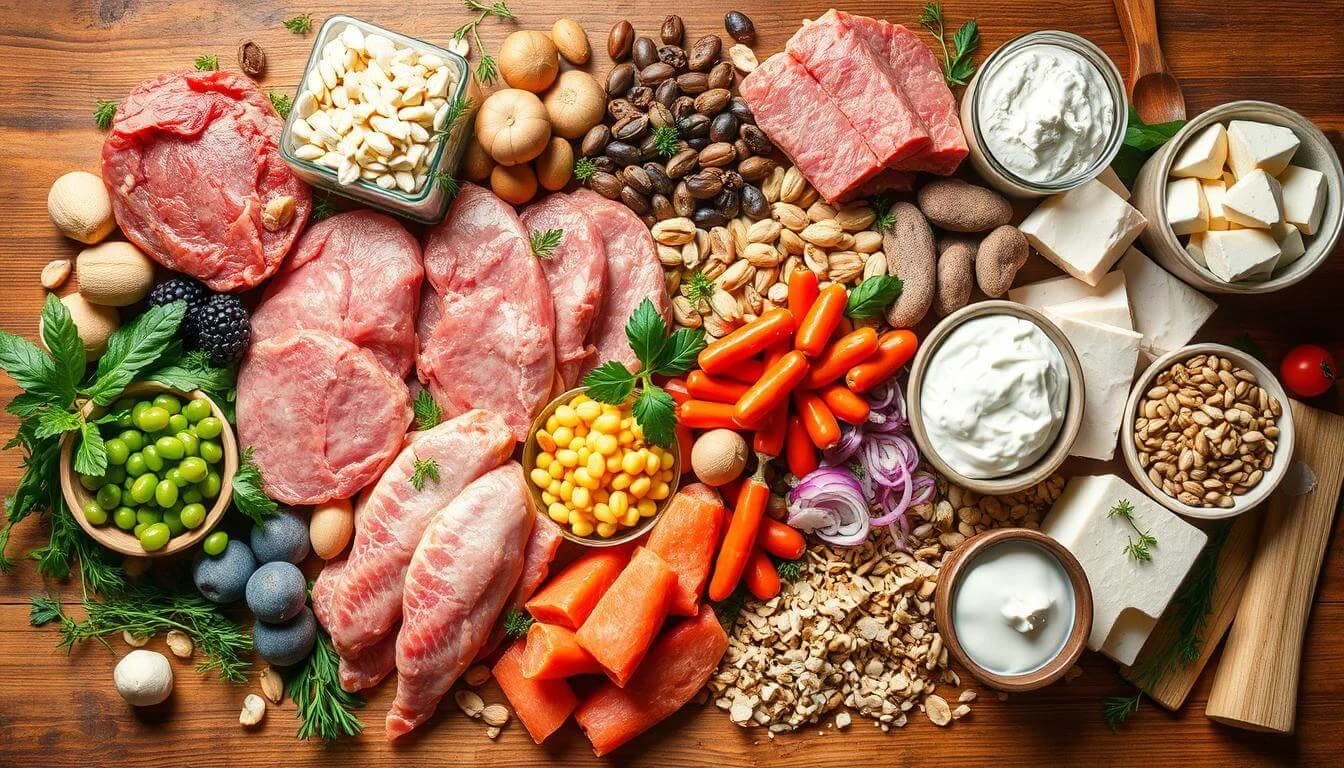
Protein’s Impact on Weight Management and Metabolism
Protein is key for weight management and metabolism. It has numerous advantages for your well-being and health. It helps you stay at a healthy weight and boosts your body’s calorie burn.
The thermic effect of protein means your body burns more energy after eating protein. This is different from carbs and fats, which don’t require as much energy to digest. You thus burn more calories throughout the day.
Protein also helps you feel full longer. This makes it easier to avoid overeating or snacking too much. It’s great for those trying to lose weight or keep a healthy body shape.
Protein is also important for keeping and building lean muscle. As you get older, keeping muscle is crucial. It helps prevent muscle loss and keeps your metabolism healthy.
Protein’s Role in Weight Management | Benefits |
Thermic Effect | Increased energy expenditure and calorie burn |
Satiety | Feeling fuller for longer, reducing the likelihood of overeating |
Muscle Preservation | Maintaining lean muscle mass to support a healthy metabolism |
Adding enough protein to your nutrition plan and dietary supplements can help. It supports your health benefits and helps you reach your weight goals.
Special Protein Considerations for Different Diets
Everyone’s nutritional needs are different. Diets like the keto and paleo have special protein needs. Let’s investigate how to address these demands.
Keto Diet Protein Requirements
The keto diet focuses on fats and low carbs. It can aid in blood sugar control and weight loss.
But, your body might need less protein in this state.
- On a keto diet, aim for 0.6-0.8 grams of protein per pound of body weight. This helps keep muscle mass and supports overall nutrition.
- Choose high-quality protein sources like fatty fish, poultry, eggs, and low-carb dairy. These meet your daily dietary supplements needs.
- Watch your protein intake. Too much can throw you out of ketosis and reduce diet benefits.
Paleo Diet Protein Sources
The paleo diet focuses on whole, unprocessed foods. It emphasizes protein from nutrient-dense, high-quality sources.
Paleo-Friendly Protein Sources | Benefits |
Lean Meats (Beef, Pork, Lamb) | Rich in health benefits, such as iron, zinc, and B vitamins |
Poultry (Chicken, Turkey) | Provide a lean, high-quality source of protein |
Seafood (Salmon, Tuna, Shrimp) | Packed with dietary supplements, including omega-3 fatty acids |
Eggs | Offer a complete protein profile and essential nutrients |
Understanding the unique protein needs and sources for different diets helps optimize your nutrition. This ensures you meet your body’s needs, regardless of your diet.
How to Handle Protein Deficiency Symptoms
Getting enough protein is key for good health. Many people might not know they’re not getting enough protein. This can cause a lot of problems. We’ll look at the signs of protein deficiency and how to fix them with the right food. Muscle weakness or loss is a big sign of protein deficiency. Proteins help build and fix muscles. Without enough, muscles start to break down, making you weaker and less able to move. Slow wound healing is another sign. Proteins help fix tissues. Without them, wounds take longer to heal and might get infected more easily.
- Brittle hair and nails: Proteins are key for hair and nail health. Without them, hair gets dry and brittle, and nails crack or peel.
- Edema (swelling): Protein deficiency can cause fluid buildup, leading to swelling, especially in the legs and feet.
- Weakened immune system: Proteins are important for a strong immune system. You run the risk of being ill if you don’t have enough.
To fix protein deficiency, eat more protein-rich foods. Eat lean meats, poultry, fish, eggs, dairy, legumes, and plant-based proteins to meet your needs. Protein supplements can also help if you can’t get enough from food. By watching for protein deficiency signs and acting on them, you can keep your nutrition and health in check.
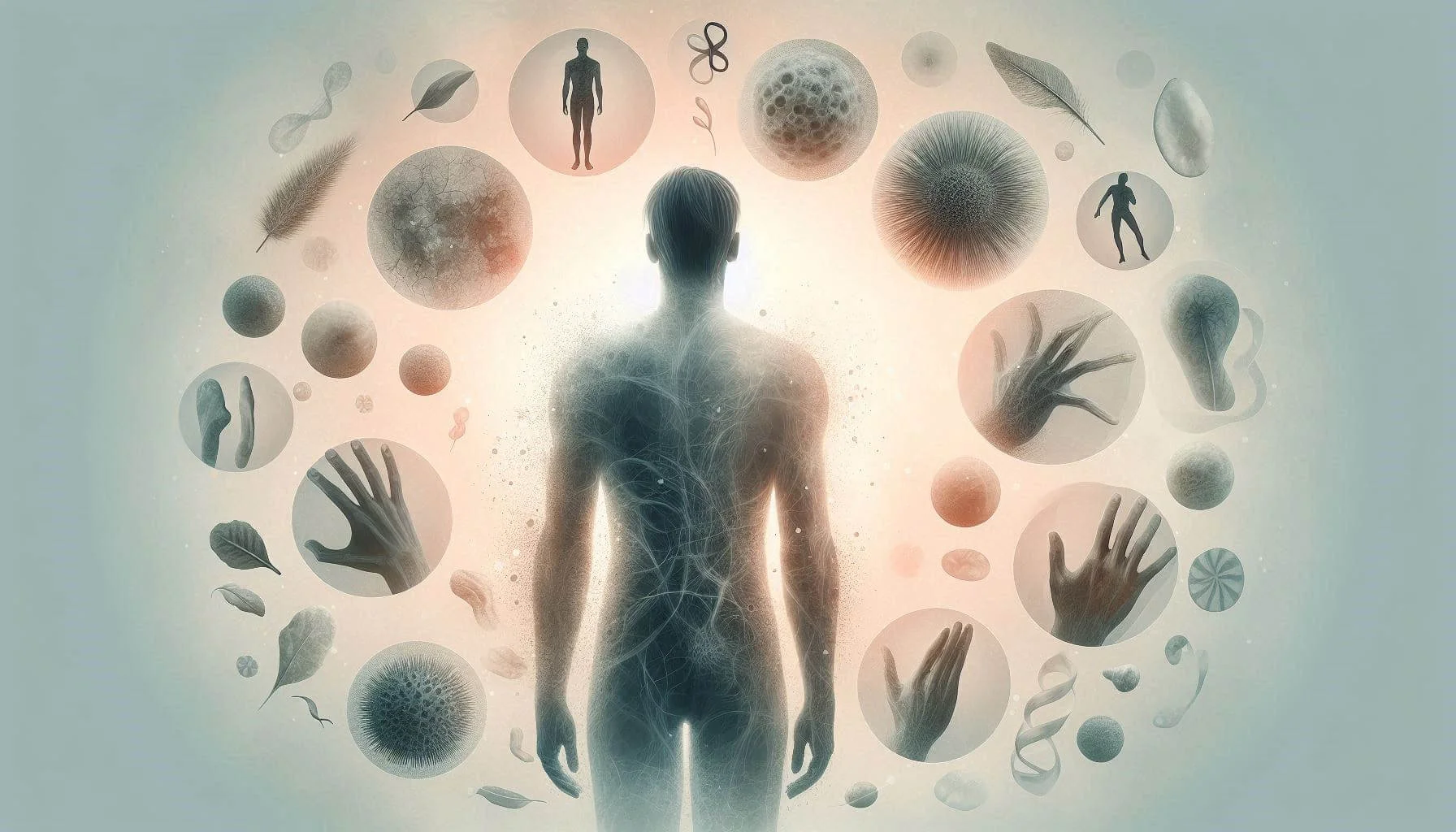
Balancing Protein Intake with Other Macronutrients
Protein is key for health and wellness. But, it’s also important to eat the right amounts of carbs, fats, and protein. This balance helps your body work its best. To make a balanced meal plan, follow these tips:
- Make 45-65% of your calories from carbohydrates. Choose whole grains, fruits, and veggies for the best nutrition.
- Make healthy fats up 20–35% of your caloric intake. Nuts, avocados, olive oil, and fatty seafood are all excellent sources.
- Use 10-35% of your calories for protein. The amount depends on your age, how active you are, and your personal needs.
By balancing your macronutrients, you support your health, muscle growth, and recovery. Dietary supplements can help with protein, but a full diet is essential.
“Achieving the right macronutrient balance is the key to optimizing overall health and wellness.”
Finding the right balance takes some effort and trial. But, the rewards are huge. Eating a variety of nutrient-rich foods fuels your body and supports long-term health.
Tips for Meeting Your Daily Protein Goals
Getting enough protein essentials can seem hard, but it’s easy with a few tips. You can add more protein to your nutrition plan. This is great for building muscle, managing weight, or staying healthy. Follow these simple tips to hit your protein targets.
Plan Ahead with Protein-Rich Meals
Start the week by preparing meals high in protein. Use lean meats, eggs, legumes, and dairy in your recipes. This way, you’ll have plenty of protein all week.
Boost Your Snacks with Protein
Snack time is a chance to get more protein. Keep snacks like Greek yogurt, hard-boiled eggs, and nut butter ready. You can also use dietary supplements like protein bars or shakes.
Prioritize Protein-Packed Ingredients
- Whenever feasible, choose lean beef and poultry cuts.
- Incorporate more fish and seafood into your diet, which are excellent sources of high-quality protein.
- Opt for dairy products like cottage cheese, Greek yogurt, and milk to boost your protein intake.
- Explore plant-based protein sources like beans, lentils, tofu, and quinoa.
Food Item | Protein (g) per Serving |
Chicken Breast (3 oz) | 26g |
Salmon (3 oz) | 22g |
Greek Yogurt (6 oz) | 17g |
Eggs (2 large) | 12g |
Lentils (1 cup cooked) | 18g |
Consistency is key for daily protein goals. By following these tips, you’ll make sure your body gets the protein essentials it needs.
Conclusion
Throughout this guide, we’ve seen how important protein is for our health and nutrition. We’ve learned about amino acids and how different people need different amounts of protein. This shows how crucial protein is for our bodies.
If you’re an athlete, someone who cares about healthy eating, or just curious about protein, this article has helped you. It shows how to choose the best protein sources for your body. Whether it’s from animals or plants, you can help your body stay healthy. Remember, finding the right balance between protein and other nutrients is key. Knowing about protein helps you make a diet plan that fits your needs. This way, you can live a healthier, more vibrant life.

